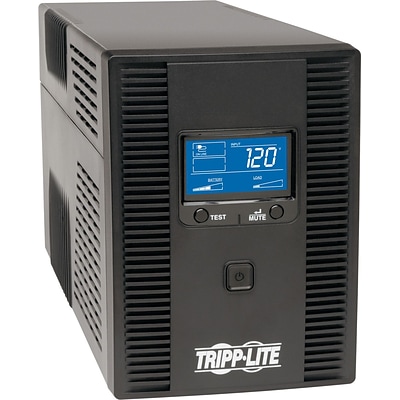Uninterruptible power supplies (UPS) protect computers during power system disturbances, preventing damage due to power surges. There are several different kinds of UPS and selecting the right one is essential to ensure adequate protection.
What is an uninterruptible power supply?
A UPS is an electronic device that constantly monitors the mains. When it detects a disturbance it automatically disconnects the mains power supply and uses batteries to provide AC power until the PC can be safely shut down.
Various UPS types include styles from simple desktop units to highly sophisticated units designed for robust duty. The most common battery backup and UPS consists of a battery-powered inverter with an electronic control system that decides when to switch over to UPS power.
What does an uninterruptible power supply do?
A UPS provides constant power during power outages and disturbances. While the name suggests uninterrupted power at all times, this is not always correct. In most instances, computers are mains powered until the UPS detects a power disturbance, at which point the UPS takes over until normal power is restored.
A UPS uses sophisticated power quality monitoring sensors to detect a variety of undesirable mains conditions, including:
- Blackouts: The complete loss of power
- Brownouts: A dangerous situation that occurs when mains voltage sags below acceptable levels
- Voltage surges: Voltage spikes caused by lighting or major electrical failures, which commonly cause damage to computers and electronics
- Excess voltage: A relatively rare but dangerous condition that burns out equipment
Reasons for having battery backup for computers
There are several reasons why it's important to have a UPS:
- Reduce downtime: Prevent system outages from affecting customers and employees
- Keep critical systems online: Examples include communication modems, internet servers, cellular and wireless communication systems, and safety critical systems
- Protect electronic equipment: Prevent power surges from damaging equipment
Types of UPS systems
UPS systems fall into one of three categories: standby, line interactive, online or double conversion. A standby UPS connects when there's a power disturbance. The time needed to switch over is very short and well within the tolerance time of computers and other electronic devices. Most computers UPS are standby types.
Line interactive units are similar, but they incorporate special circuitry that alleviates the effects of brownouts when the lights go dim.
Online UPS systems are more sophisticated and are always connected. They are best for circumstances when power outages, lighting disturbances, and other voltage surges are common.
An alternative UPS system uses a power inverter connected to a bank of batteries that are constantly charged, similar to systems commonly used in recreational vehicles.
How to select a UPS
A UPS must be large enough for the load. Its power output, measured in watts or VA (volts times amps), needs to be greater than the total connected load. For a desktop computer this could include its power supply, monitor, and the modem. A 250-watt UPS will normally suffice. A standard UPS protects any electronic gear including TVs and stereos but doesn't have sufficient power for large items such as refrigerators.
The next consideration is how long the UPS should run. Most run for between 5 and 15 minutes, allowing users to power down equipment safely. But it's possible to extend the run time by specifying a larger UPS or, with certain models, by adding an extended battery module so that work can continue uninterrupted during an outage.
UPS battery backup features
A standalone uninterruptible power supply usually has several power outlets, a simple control panel, and a status alarm. More advanced units have software that's installed on the user's computer, allowing them to monitor the condition of the mains power, status of the UPS, and amount of battery time left. Some also monitor the condition of the battery and provide warning when it's time to replace the battery.
Maintenance of UPS battery backup systems
A UPS needs no maintenance apart from replacing its battery periodically; replacement UPS batteries are readily available for most popular models. Sealed lead acid batteries typically last for two to three years, while lithium-ion batteries last longer.
It's important to check battery condition from time to time because this greatly affects UPS run time and availability. This can be done by simply disconnecting the mains power to the UPS and seeing how long it runs before power is lost to the computer.
Choosing the right uninterruptible power supply
When selecting a UPS, it pays to take a little time to select a model that is large enough and which has features suited to the application. This simple process helps ensure trouble-free operation and guarantees peace of mind.

